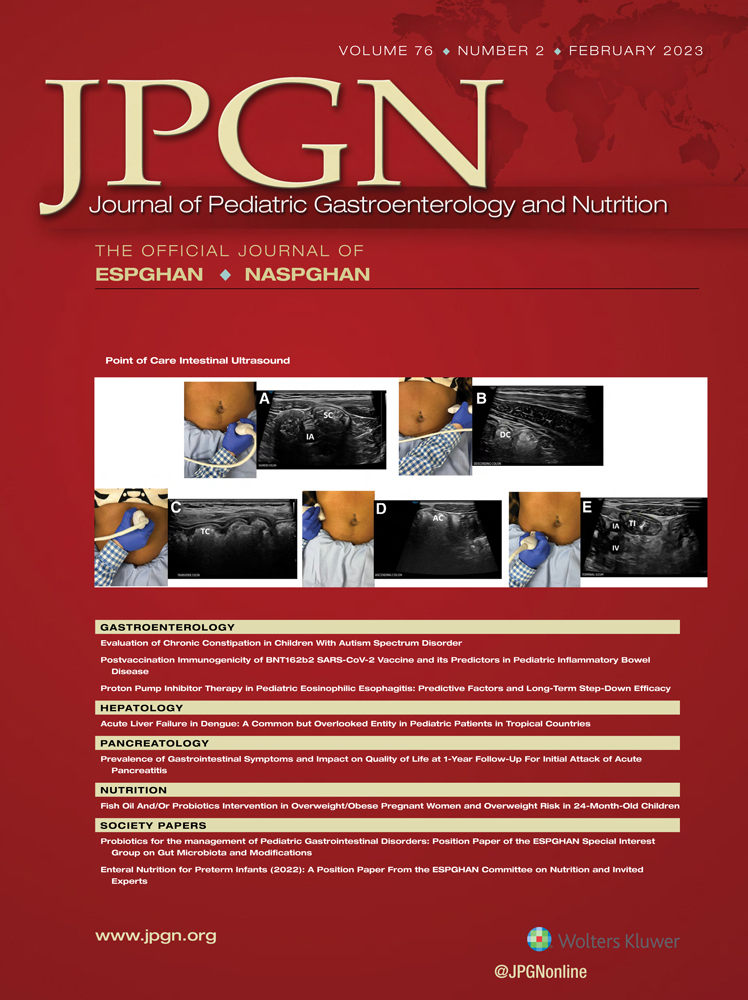Fecal Elastase in Preterm Infants to Predict Growth Outcomes
A.B.H. previously received research support from Prolacta Bioscience and Fresenius Kabi. C.R.M. is a consultant with Mead Johnson Nutrition. C.R.M. is an advisory board member to LUCA Biologics, Plakous Therapeutics, LactaLogics, Inc., Vitara Biomedical, Inc., and previously with Prolacta Biosciences. C.R.M. received past and current funding from Shire, Mead Johnson Nutrition, Abbott Nutrition, Massachusetts Life Sciences Center, Charles H. Hood Foundation, and NIH (NIDDK and NICHD). The remaining authors report no conflicts of interest.
This article has been developed as a Journal CME and MOC Part II Activity by NASPGHAN. Visit https://learnonline.naspghan.org/ to view instructions, documentation, and the complete necessary steps to receive CME and MOC credits for reading this article.
Supplemental digital content is available for this article. Direct URL citations appear in the printed text, and links to the digital files are provided in the HTML text of this article on the journal’s Web site (www.jpgn.org).
Sources of Funding: This study was supported by the Evangelina “Evie” Whitlock Neonatology Training Grant, Clinical Research Center at Texas Children’s Hospital, and National Institute of Diabetes and Digestive and Kidney Diseases, Grant/Award Number: K08 DK113114 to GP.
Abstract
Objectives:
Preterm infants are born functionally pancreatic insufficient with decreased pancreatic production of lipase and proteases. Developmental pancreatic insufficiency (PI) may contribute to reduced nutrient absorption and growth failure. We sought to determine longitudinal fecal elastase (ELA1) levels in a cohort of preterm infants and whether levels are associated with growth outcomes.
Methods:
Prospective observational study of 30 infants 24–34 weeks gestational age and birth weight ≤1250 g fed the exclusive human milk diet, consisting of human milk with human milk-based fortifier. ELA1 was quantified by ELISA during the first 2 weeks of life [Early; 7.5 ± 1.8 days of life (DOL)] and after attainment of full, fortified feedings (Late; 63.6 ± 24.1 DOL).
Results:
Early ELA1 levels were 192.2 ± 96.4 µg/g, and Late ELA1 levels were 268.0 ± 80.3 µg/g, 39.4% higher (P = 0.01). Infants with early PI (ELA1 < 200 µg/g) were more likely male and of lower gestational age, weight, length, and head circumference at birth. These variables, but not PI status, independently predicted somatic growth.
Conclusions:
Fecal ELA1 in preterm infants fed exclusive human milk diet increases with postnatal age. Although pancreatic function in preterm infants may serve as a biological contributor to early postnatal growth failure, additional studies using fecal ELA1 as a predictive biomarker for growth failure are needed in larger cohorts.




